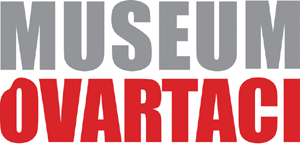
The reception at the
psychiatric emergency room.
Visions of district psychiatry
A quote from 1978 shows how it was anticipated that the future Community Mental Health system would break with the existing Mental Health Institution:
”Mental disorders always unfold in the encounter with other people. Therefore, treatment must be implemented in the environment where this occurs – e.g. in the family and at the workplace.”
By a Doctor and a Psychologist, nov.11th 1978, Aarhuus Stiftstidende.
In 1957 the first public mental health service was established on the island of Samsø on the initiative of Erik Strömgren . This service is described in the book ”The Samsø Project,” Acta Jutlandica LV , 1981,
(Edited by Johs. Nielsen, Jørgen Achton Nielsen, Marianne Kastrup and Erik Strömgren).
There are three distinct elements in the treatment of the mentally ill patients, which the district psychologist carries.
1) The first is preventative or alleviating treatment.
2) The second is training and rehabilitation in the stable stages of an illness.
3) The third is ensuring the necessary financial and practical support for disabled.
Social psychiatry
Within local areas the district psychiatry service was expected to provide co-housing schemes and offer opportunities for work, education and leisure activities. But in 1991, after several years of neglect and cut back on beds at psychiatric wards, the government was instructed by the parliament to expand the district and social psychiatry service.
The county authorities and local government were now to take care of mentally ill patients living outside hospitals.
From 1993 onwards the numbers of co-housing schemes, drop-in centers and leisure facilities did increase. But this took too long for it to be successfully implemented. During the same period far too many beds in the psychiatric wards were closed and too few financial resources were provided to the district psychiatry which in 2002 was functioning far from optimally.
Hospitalization and revolving-door patients
Before the introduction in 1954, of psychotropic drugs, patients were often admitted to the psychiatric hospitals for a very long time. This resulted in what is known as institutionalized patients, patients who regarded the hospital their permanent home. These patients couldn’t make it on their own in the bustling society.
Now long hospitalizations are rarely seen. In the early 1990s, when the cut down on beds culminated, a main aim with short term hospitalization was to help patients to become able to cope on their own in society. Therefore rehabilitation therapies started focusing on social skills an example being cooking.
However, many patients were discharged too early and unfortunately this is still too often occurring today. This results in what is called “revolving-doors patients”, which means patients with relatively short intervals between admissions and an all too frequent occurring admission. A fair amount of hospitalizations could have been avoided if there had been a sufficient number of psychiatric beds and considerably more staff both in the psychiatric hospitals and in the district psychiatry.

The face of psychosis.
Daily occurring sadness and fatigue
Another unsatisfactory condition within district psychiatry is that most often it is understaffed, resulting in that the few resources available within the care system are being used for taking care of mentally ill patients with severe mental illnesses such as psychosis.
People, suffering from anxiety or mild depression and those who have a hard time coping with life in general, often cannot get help within the district psychiatry system. They have to attend their own G.P. or consult a practicing psychiatrist, who often has a long waiting list, or they have to pay themselves for psychological counseling.
However, it has been a significant help for many mentally ill that in 1999 a psychiatric casualty ward has been established at the Psychiatric Hospital here in Risskov and that the Gallo Activities also opened in 1999 for crisis counseling in Aarhus.

Galebevægelsens (The Mad
Movement’s) poster for
”The first “Mad festival” in
history, in Viborg in 1979.
"Galebevægelsen"
“Galebevægelsen” (“The Mad Movement”) emerged as an activist movement by and for psychiatric patients. Its roots can be traced to the 1968 revolt where also a break up in general public was seen with revolts against old authorities. A group of people with mental illnesses –calling themselves “the mad ones” – would no longer accept being cut off with regard to the doctors and their reliance on psychotropic drugs. ”We want to be proactive – not merely treated” was the slogan at the first “Mad Festival” held in Viborg in 1979.
With this a new anti-psychiatry movement had started and it related to the predecessors by calling their magazine ”Amalie” named after the writer Amalie Skram who, around the 1890s, was the most important female writer on the Modern Breakthrough. The mentally ill, the mad (mad, also understood as angry) wanted to unite in shared activities – e.g. interdisciplinary seminars and demonstrations in the streets. They wanted to reach out to the wider community and to the different therapies that were available.
The “mad” brain
Because of the better understanding we have today of the way the brain works, the word “disturbed” is more appropriate than the word “mad” when describing the brain.
Disturbed because we now know it is a malfunction of the brain the causes, for example, Psychosis.
The “Mad Movement” did not entirely succeed in changing society’s attitudes towards mental illness, but it has definitely played a significant role in the way that the mentally ill are today accepted on their own terms.



